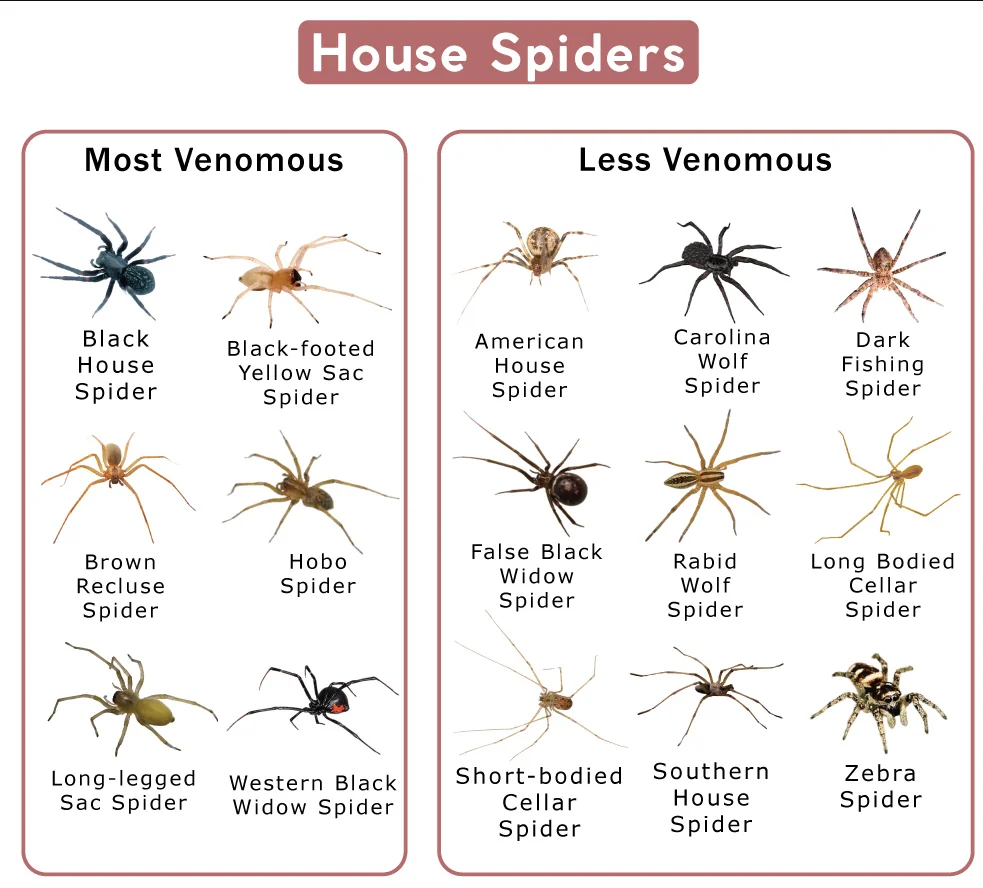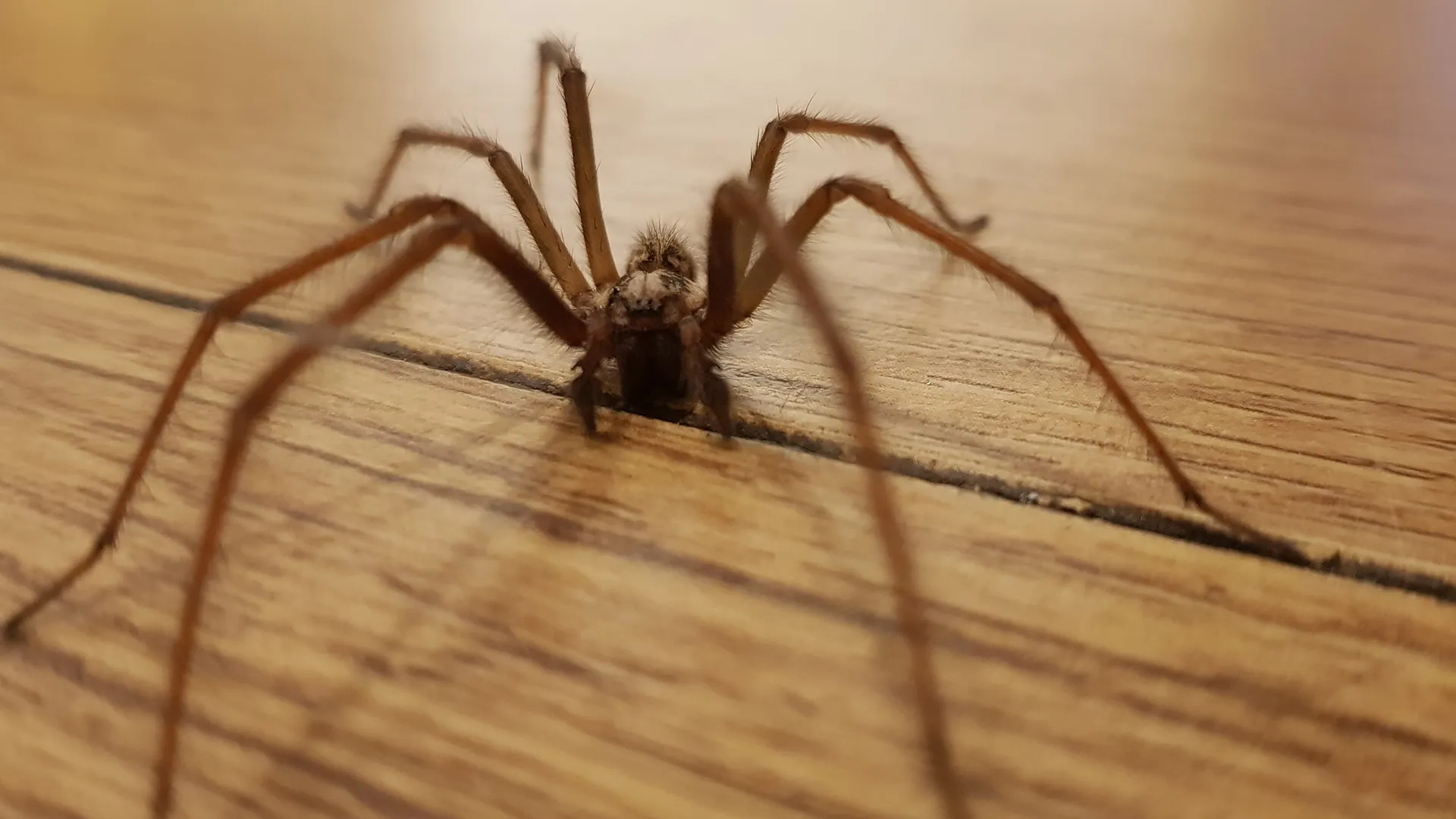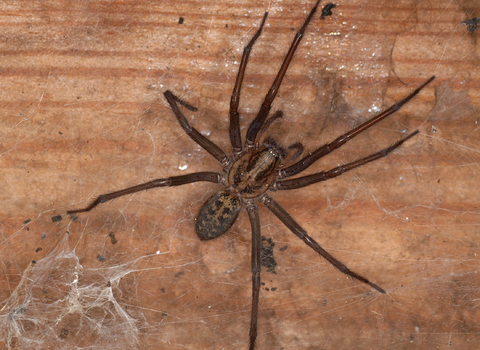Florida’s subtropical climate showcasing mild winters, warm temperatures, and steady humidity allows spiders to stay active and spin webs nearly year-round. In Pompano Beach, located along South Florida’s Atlantic coast, these eight-legged creatures commonly make their way into single-family homes, short-term rentals, or commercial buildings if occupant or property manager efforts to reduce insects or tidy up corners falter. This page explains why spiders flourish in Florida, how to spot an infestation, and why you should consider a professional spider exterminator for efficient and lasting removal of these arachnids.
Whether you manage a home in Pompano Beach or operate rental spaces for locals and visitors, detecting spiders promptly and deploying specialized, multi-phase solutions—shields occupants from anxiety, potential spider bites, and the inconvenience of repeated do-it-yourself tactics that typically miss hidden egg sacs or the underlying insect concerns driving spider populations indoors.
Why Spiders Thrive in Florida
Mild Winter Temperatures
In northern regions, subfreezing winter weather cuts spider activity for months. Florida’s gentle cold season rarely reaches freezing, enabling spiders to hunt for insects and reproduce year-round. Climate-controlled indoor settings (around 65–85°F) further ensure no seasonal downtime, allowing spiders to maintain each life stage egg, juvenile, adult if occupant or manager detection falls short.
High Humidity & Insect Prey
Spiders prey on insects, and Florida’s humidity supports extensive bug populations. In Pompano Beach, frequent lawn irrigation or periodic rainfall fosters habitats for flies, roaches, or other insects around properties feeding spider hunts. Porch lights also attract nighttime insects, drawing spiders to construct webs near entryways or corners.
Frequent People & Item Movement
Florida’s relocations, occupant turnovers, and short-term rental traffic bring personal belongings and secondhand items that might harbor spider egg sacs. In multi-unit buildings or hospitality venues, occupant or staff oversight may allow spiders to spread if occupant checks or insect control measures remain incomplete.
Multiple Spider Species
Florida hosts diverse spider types, each with distinct habits:
- House Spiders: Spin messy cobwebs indoors corners, behind furniture.
- Orb Weavers: Build large, circular webs outdoors near porch lights.
- Widow Spiders: Potentially venomous if agitated; inhabit dim, cluttered spots like garages or sheds.
- Wolf Spiders: Pursue insects on foot, sometimes wandering indoors at night.
All can thrive unless occupant synergy or specialized exterminator approaches lessen insect prey and remove spider egg sacs, particularly under Florida’s mild winter that rarely slows spider reproduction.

Telltale Signs of a Spider Infestation
- Multiple Indoor Webs
- A couple of webs is common, but many webs near corners, ceilings, or baseboards often indicate a larger spider presence.
- Orb weavers favor outdoor webs, whereas house or cobweb spiders create smaller, tangled webs inside.
- A couple of webs is common, but many webs near corners, ceilings, or baseboards often indicate a larger spider presence.
- Egg Sacs
- Round or disc-like sacs affixed to webs, furniture undersides, or dim corners.
- Each sac can produce dozens or more spiderlings if occupant or manager removal is neglected.
- Round or disc-like sacs affixed to webs, furniture undersides, or dim corners.
- Frequent Spider Sightings
- Seeing multiple spiders daily suggests ample insect prey indoors.
- Wolf spiders or other hunters might patrol floors or walls at night, while widow spiders lurk in dark, cluttered zones.
- Seeing multiple spiders daily suggests ample insect prey indoors.
- Insect Remains in Webs
- Fragments of flies, moths, or roaches trapped in silken threads confirm active spider feeding.
- Substantial accumulations show well-fed spiders poised to lay more egg sacs.
- Fragments of flies, moths, or roaches trapped in silken threads confirm active spider feeding.
- Possible Bites & Occupant Alarm
- Most Florida spiders are not aggressive, yet occupant unease grows if venomous types appear indoors.
- Actual bites are uncommon but can happen in heavier infestations or if occupant contact with spiders spikes.
- Most Florida spiders are not aggressive, yet occupant unease grows if venomous types appear indoors.
- Cluttered or Damp Storage
- Garages, attics, or sheds with rarely disturbed boxes accumulate webs or egg sacs.
- Spiders anchor new sacs here if occupant cleaning is sporadic, feeding on insects living amid the clutter.
- Garages, attics, or sheds with rarely disturbed boxes accumulate webs or egg sacs.
Why Overlooking Spiders Is Risky
Rapid Population Growth
Female spiders can lay multiple egg sacs each containing numerous eggs. Ignoring these sacs allows spiderlings to hatch and populate more corners if occupant or manager action lags.
Stress & Potential Bites
Although most Florida spiders cause minimal harm, occupant worry rises upon seeing large orb weavers or widow spiders indoors. Even harmless household spiders provoke occupant stress if webs and egg sacs appear extensively.
Excess Web Buildup
Unattended webs on ceilings, corners, or behind furniture degrade a property’s cleanliness or occupant perceptions. Short-term rental owners in Pompano Beach could receive occupant complaints if webs become noticeable.
Underlying Insect Infestations
Spiders remain where insect prey is abundant. Without occupant synergy or pro solutions managing roaches, flies, or other bugs, spider webs quickly return, even after occupant attempts to remove them short-term.
More Costly Solutions Later
When egg sacs release spiderlings across multiple rooms, new webs pop up swiftly. Removing advanced infestations may require occupant relocation or repeated insecticidal dusting, inflating occupant inconvenience and overall treatment cost.

Why a Professional Spider Exterminator Is Critical
Full Property Inspection
A spider exterminator carefully reviews overhead beams, behind furniture, attic rafters, or corner ceilings for webs, egg sacs, and insect debris. Recognizing spider species house, orb weaver, widow, wolf guides overhead eave spraying, vacuuming webs, or insecticidal dust usage.
Multi-Pronged Removal
Professionals remove webs, vacuum egg sacs, and apply insecticidal dust or sprays where spiders rest. DIY occupant solutions like random aerosols often kill only visible spiders, overlooking hidden sacs or skipping insect populations fueling spider presence indoors.
Safe, Targeted Chemicals
Unskilled occupant pesticide attempts can saturate occupant areas, risking occupant or pet health. Certified exterminators precisely apply insecticidal dust or sprays in cracks, corners, or overhead beams prime spider habitats while occupant synergy (removing webs) helps eradicate egg sacs. Minimizing occupant or pet chemical exposure is a priority.
Addressing Insect Prey
Because spiders rely on insects for food, occupant synergy controlling roaches, flies, or ants indirectly shrinks spider populations. Sealing garbage bins or swapping porch bulbs for yellow “bug lights” hamper nighttime insect gatherings that attract orb weavers or house spiders to building exteriors.
Follow-Up & Assurance
Spider egg sacs can hatch weeks after the occupant or manager eliminates visible webs. Many exterminators re-check occupant or staff feedback if new webs appear, reapplying occupant housekeeping or insecticidal dust, ensuring newly hatched spiderlings also meet lethal conditions.
Typical Methods for Spider Treatments
- Inspection & Species Determination
- Professionals look for webs, egg sacs, or leftover insect bodies along corners, overhead beams, furniture backs, or attics.
- Differentiating spider species clarifies overhead eave spraying, vacuuming, or crack-and-crevice insecticide as the best approach.
- Professionals look for webs, egg sacs, or leftover insect bodies along corners, overhead beams, furniture backs, or attics.
- Web & Egg Sac Removal
- Physically removing webs and sacs eliminates spider feeding zones and pending spiderlings.
- Proper disposal (sealing in plastic) stops egg sacs from hatching in occupant trash.
- Physically removing webs and sacs eliminates spider feeding zones and pending spiderlings.
- Insecticidal Dust & Residual Sprays
- Professionals apply sprays or dust in cracks, baseboards, overhead rafters places spiders favor.
- Minimizing occupant or pet exposure while ensuring returning spiders or newly hatched spiderlings encounter lethal coverage.
- Professionals apply sprays or dust in cracks, baseboards, overhead rafters places spiders favor.
- Reducing Insect Prey
- Spiders feed on bugs like roaches or flies. Occupant synergy or professional insect solutions hamper spider expansions.
- Insect Growth Regulators hamper insect breeding, indirectly starving spider populations.
- Spiders feed on bugs like roaches or flies. Occupant synergy or professional insect solutions hamper spider expansions.
- Vacuuming & Steam Indoors
- Frequent vacuuming collects stray spiders, eggs, or insect remains that feed them.
- Steam kills spiders or eggs on contact in deeper carpet or upholstery layers, chemical-free.
- Frequent vacuuming collects stray spiders, eggs, or insect remains that feed them.
- Exclusion & Outdoor Adjustments
- Sealing cracks, adding door sweeps, or patching window screens keeps insects and thus spiders out.
- Replacing bright porch bulbs with yellow “bug lights” decreases nighttime bug draws, limiting spider hunts near entrances.
- Sealing cracks, adding door sweeps, or patching window screens keeps insects and thus spiders out.
- Re-Check & Monitoring
- Spider egg sacs hatch weeks after the occupant sees initial relief. Additional occupant synergy or insecticidal dust ensures leftover sacs don’t reintroduce a new wave of spiders.
- Re-check occupant sightings to finalize occupant confidence that spiders won’t repopulate unexpectedly.
- Spider egg sacs hatch weeks after the occupant sees initial relief. Additional occupant synergy or insecticidal dust ensures leftover sacs don’t reintroduce a new wave of spiders.
- Inspection & Species Determination

Service Area: Pompano Beach
Though spiders can settle throughout Florida’s mild winter environment, this page specifically covers Pompano Beach, where occupant synergy plus specialized spider treatments remain indispensable for thoroughly removing or preventing spider intrusions. Florida’s gentle cold season rarely slows spider feeding or egg laying, requiring occupant vigilance and professional extermination to ensure a web-free interior year-round.
Why Choose Us
Florida-Focused Solutions
We integrate recognized spider management vacuuming webs, steam or insecticidal dust, controlling insect prey tailored to Florida’s climate. Occupant synergy (like clutter reduction or bug light usage) combined with advanced exterminator coverage surpass occupant do-it-yourself tries that typically miss hidden egg sacs or underlying insect infestations fueling spider expansion.
Thorough Surveys
Before chemical application or web removal, technicians investigate corners, overhead beams, or furniture backs for webs, sacs, or leftover insect shells. Concluding whether spiders dominate a single area or multiple floors shapes occupant synergy plus specialized coverage for each stage.
Safe, Targeted Chemical Use
Professionals place insecticidal dust or sprays at spider rest points baseboards, attic rafters, behind furniture rather than oversaturating occupant floors. Removing webs or sacs drastically lowers spider presence. Occupant synergy focusing on roach/fly control ensures fewer insects for spiders to eat.
Follow-Up & Occupant Education
Because spider eggs can hatch weeks after the occupant sees initial improvement, occupant or scheduled re-check visits confirm newly emerged spiderlings also meet lethal solutions. Occupants might adopt frequent vacuuming, properly store trash, or seal entry points starving spiders of prey or easy infiltration.
Fast, Local Assistance
Covering Pompano Beach, we understand occupant or tourist flows, short-term rentals, and Florida’s mild winter fueling spider hunts. Our proven solutions and flexible scheduling cut occupant disruptions, ensuring thorough spider elimination across each life stage.
Next Steps
Noticing webs in corners or overhead beams, spotting egg sacs on furniture undersides, or uneasy about venomous species lurking in sheds? Contact us to learn more or schedule your service. Our spider treatments in Pompano Beach unite precise property checks, web or egg sac removal, strategic insecticide usage, occupant synergy to reduce insect prey, and essential follow-up visits stopping spider infestations and deterring future arrivals.
Act quickly to save occupants or pets from potential bites, occupant fears, or the sight of unsightly webs. Rely on our Florida-based spider exterminator knowledge to address each spider species thoroughly, guaranteeing a web-free property in Florida’s mild winter environment that otherwise sustains insect and thus spider populations year-round.
